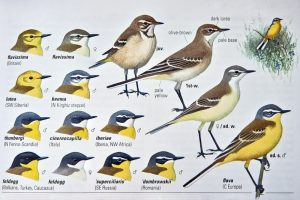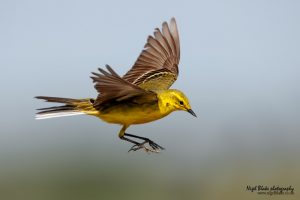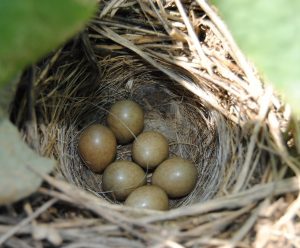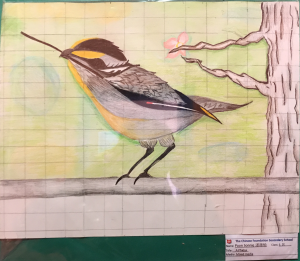| Common Name | (in English) Yellow Wingtail |
| (in Chinese) 黃鶺鴒 | |
| Scientific Name | (in Latin) Motacilla flava |
| Peculiar characteristics / external features: | It is a slender 15–16 cm long bird, with the characteristic long, constantly wagging tail of its genus. It is the shortest tailed of the European wagtails. The breeding adult male is basically olive above and yellow below. In other plumages, the yellow may be diluted by white. The heads of breeding males come in a variety of colours and patterns depending on subspecies. |
| Distributions: | This species breeds in much of temperate Europe and Asia. It is resident in the milder parts of its range, such as western Europe, but northern and eastern populations migrate to Africa and south Asia. |
| Habits: | |
| Dietary | Invertebrates. |
| Reproductive (Solitary/Social/Territorial, Courtship Behavior, Taking care of youngs, etc) | This insectivorous bird inhabits open country near water, such as wet meadows. It nests in tussocks, laying 4-8 speckled eggs. |
| Whatever appropriate | Declines in some countries have been linked to agricultural intensification, especially wetland drainage and the replacement of grasslands with cereals. In addition the use of pesticides and the dumping of manure may also be a threat. |
| Interesting Fact: | This species’ systematics and phylogeny is extremely confusing. Literally dozens of subspecies have been described at one time or another, and some 15-20 are currently considered valid depending on which author reviews them. In addition, the citrine wagtail (M. citreola) forms a cryptic species complex with this bird; both taxa as conventionally delimited are paraphyletic in respect to each other. The populations of the Beringian region are sometimes separated as eastern yellow wagtail (M. tschutschensis). |
References:
https://www.arkive.org/yellow-wagtail/motacilla-flava/
http://www.luontoportti.com/suomi/en/linnut/yellow-wagtail
https://www.birdid.no/bird/eBook.php?specieID=1247&compareSpecieID=1696





